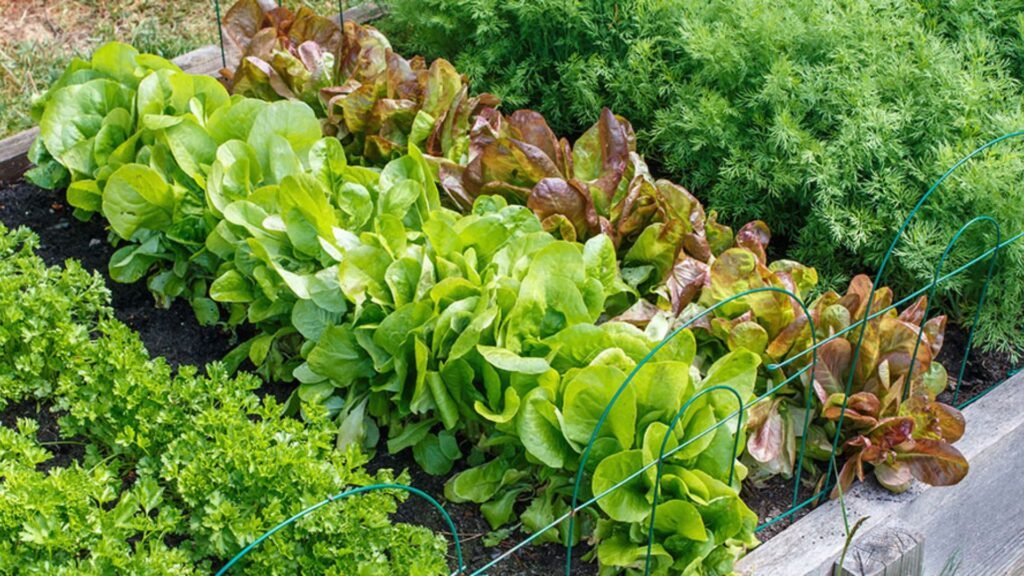How to Create a Beautiful and Functional Vegetable Garden
Creating a vegetable garden that is both beautiful and functional requires thoughtful planning and design. A well-planned garden not only yields fresh produce but also enhances your outdoor space. This guide provides practical tips for designing a vegetable garden that meets your aesthetic preferences and functional needs.

Planning Your Garden Layout
Assess Your Space
Start by evaluating the space available for your vegetable garden. Consider factors such as sunlight, soil quality, and access to water. Choose a location that receives at least six to eight hours of direct sunlight each day, as most vegetables need plenty of light to thrive. Ensure the area has good drainage to prevent waterlogging and root rot.
Designing the Layout
Plan your garden layout to maximize space and efficiency. Use raised beds, containers, or traditional garden plots based on your space and preferences. Raised beds offer better drainage and can be customized to suit your height, reducing the need for bending. Containers are ideal for smaller spaces or patios and allow for easy mobility. For traditional plots, use rows or grid patterns to organize your plants.
Selecting the Right Vegetables
Choose Suitable Varieties
Select vegetable varieties that are well-suited to your climate and growing conditions. Research which vegetables thrive in your region and choose those that match your soil type and weather patterns. Consider growing a mix of quick-growing and long-season crops to ensure a continuous harvest throughout the growing season.
Consider Companion Planting
Companion planting involves growing complementary plants together to enhance growth and reduce pest problems. For example, planting basil near tomatoes can improve flavor and deter pests. Incorporate flowers and herbs that attract beneficial insects and pollinators, adding beauty and functionality to your garden.
Discover Nature’s Beauty with Tulips in the Woods
Tulips in the Woods brings you closer to nature with tips on gardening, floral arrangements, and seasonal plant care. Their insights help both beginners and experienced gardeners create vibrant outdoor spaces. Explore more unique ideas and inspiration at kingjohnnie Site. Enhance your garden and enjoy the tranquility of nature with every visit.
Improving Soil Quality
Testing and Preparing the Soil
Test your soil to determine its pH and nutrient levels. Most vegetables prefer slightly acidic to neutral soil (pH 6.0-7.0). Amend your soil with organic matter, such as compost or aged manure, to improve fertility and structure. Well-prepared soil enhances root development and provides essential nutrients for healthy plant growth.
Maintaining Soil Health
Practice crop rotation to prevent soil depletion and reduce the risk of diseases and pests. Avoid planting the same vegetables in the same spot year after year. Incorporate cover crops, like clover or rye, during the off-season to enrich the soil and prevent erosion.
Implementing Efficient Watering Systems
Choosing a Watering Method
Select a watering method that suits your garden size and layout. Drip irrigation systems deliver water directly to the plant roots, minimizing waste and reducing the risk of disease. Soaker hoses are another efficient option, providing even moisture to garden beds. For smaller gardens, hand watering with a hose or watering can may suffice.
Watering Tips
Water your vegetables early in the morning to reduce evaporation and allow leaves to dry before evening, which helps prevent fungal diseases. Ensure the soil is consistently moist but not waterlogged. Mulching around plants can help retain moisture and reduce the need for frequent watering.
Adding Aesthetic Touches
Incorporating Garden Features
Enhance the visual appeal of your vegetable garden with decorative features such as trellises, arbors, or garden paths. Trellises can support climbing plants like beans and cucumbers while adding vertical interest to your garden. Arbors and garden paths create defined spaces and improve accessibility.
Choosing Complementary Plants
Incorporate edible flowers and herbs that add color and texture to your garden. Marigolds, nasturtiums, and zinnias not only brighten up the space but also attract pollinators and repel pests. Consider adding ornamental elements like garden statues or bird baths to create a more inviting and relaxing environment.
Managing Pests and Diseases
Implementing Integrated Pest Management (IPM)
Use Integrated Pest Management (IPM) techniques to control pests and diseases in your vegetable garden. Monitor plants regularly for signs of trouble and use natural predators, like ladybugs or lacewings, to keep pest populations in check. Implement physical barriers, such as row covers, to protect plants from insects and birds.
Practicing Good Hygiene
Maintain good garden hygiene by removing diseased or dead plants promptly. Clean gardening tools and equipment regularly to prevent the spread of pathogens. Rotate crops and use disease-resistant varieties to minimize the risk of infections and improve overall garden health.
Conclusion
Designing a vegetable garden that is both functional and beautiful involves careful planning and attention to detail. By selecting the right vegetables, preparing your soil, implementing efficient watering systems, and adding aesthetic touches, you can create a productive and visually pleasing garden space. Regular maintenance and thoughtful design choices will ensure that your vegetable garden remains a source of fresh produce and enjoyment throughout the growing season.



